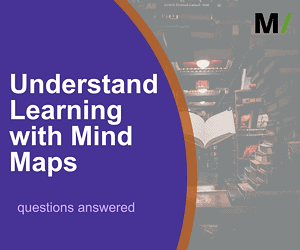A mind map can help you to understand your learning process. Let’s have a look at two important concepts in learning.
I’m talking about the Circle of Competence and the Four Stages of Learning.
Today we combine these two with mind maps. It will help you to make your learning experience even better.
Let’s go!
Two Important Concepts You Should Understand
As I mentioned we will talk about two important concepts.
1. The Circle of Competence
The first one is the Circle of Competence. Here is an overview of the idea:
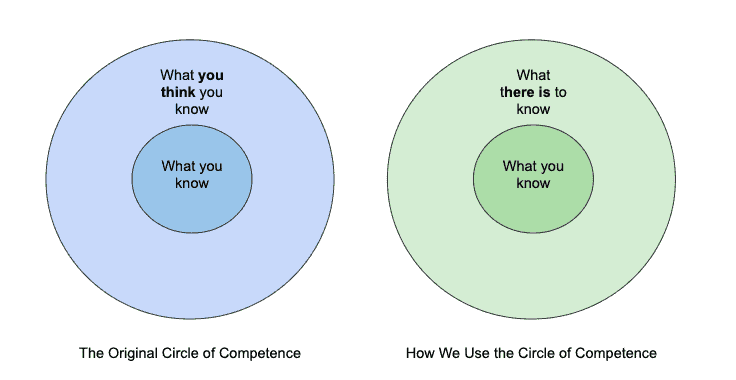
The original model is the one on the left. We use a slightly different way of looking at thing. That is shown in the right side image. The two circles show you what you know, and what there is to know (so the things you can learn).
The inner circle is basically your current knowledge. When you start to study you are expanding your knowledge into the bigger circle.
You could probably add another circle to this. That third circle shows you how much you should learn to be competent or skilled.
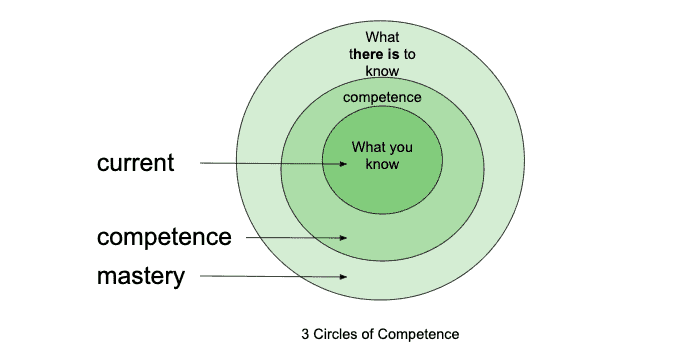
What many students often fail to see is that you don’t need to have all the knowledge within the biggest circle. That could be seen as mastery of a topic. Students, especially in the beginning, shouldn’t aim for mastery. That is like showing perfectionism when you are studying. I know it is possible to have that commitment or drive. But ask yourself, does it really help you?
I would say, aim for the second-largest circle and if needed, you can learn more later.
By the way… here is a nice connection with a mind map.
Loop at the 3 circles. When you put your mind map on top of the circles they match! Your inner part of the mind map is your competence or knowledge. Probably the first and second level of your mind map is the knowledge you already have.

After that, you go into the “unknown” territory. In the mind map that could be represented by the extra details in lower levels.
In general, you can say that a mind map is (very) abstract in the middle. At the outside of the map, it is (very) detailed.
Most of the time people know a little about many different topics. This is the smallest circle. A professor probably knows many details about his field of expertise. This is the biggest circle. Understand that when studying, you have to find the right location and size of the middle circle.
The 4 Stages of Learning
The second concept is that of the 4 stages of learning
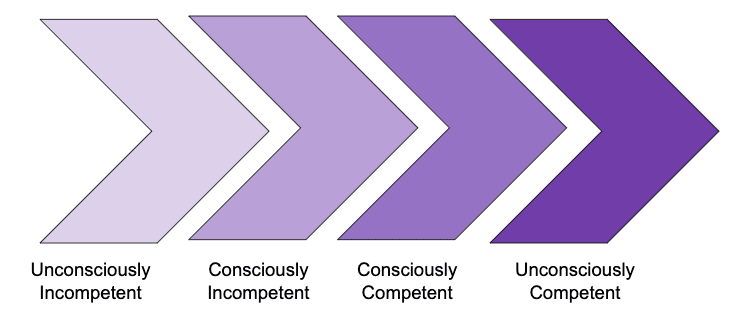
What do you know about quantum mechanics? Most likely, you are not that familiar with it. No problem! You probably would not need that knowledge anyway 🙂
You now know that you were unconscious about your incompetence. This is the first stage of learning. You realize you know little to nothing about a topic.
Ideas you had were not based on competence. Your intuition was not able to help you to find answers.
By asking the question, you became conscious about your incompetence. You entered stage two! This is the learning stage. You can and will make mistakes. After all, you are learning to become more competent.
After a while, you become competent. You enter stage three. This means that you can analyze information better. You are still analyzing consciously about what you say.
Then you enter stage four. This is where you “know” without consciously thinking about it. This is the professor who answers and then thinks about explaining why this is the right answer.
When you are studying, you probably don’t need to go all-in for entering the fourth stage. Stage 3 is good enough!
Comparing this with the mind map creates an interesting dynamic.
Your mind map grows when you study a topic. You expand your knowledge. The competence grows when you can create links between branches in your map. You can grow even further when you create connections between different mind maps.
How to use this
Often it is not only about expanding your knowledge into the biggest circle.
When you are competent in a number of fields, you can make connections between different circles. Doing that will increase your knowledge. What I did was I studied physics and business.
The two aren’t that connected at first sight. That is, until you understand they both rely on systems. These systems look alike. That helps you to understand both fields better. You can expand your knowledge much faster.
The size of your mind map when learning
As you now know, you start out in the smallest circle of competence. This is the small center of the mind map. It also is somewhere between stage one and stage two in the stages of learning.

While you are studying, you grow your mind map. You expand your knowledge into the bigger circle. You move up from stages 1 and 2 to stages 2 and 3.
Something interesting happens at this point.
You add more and more information to the map. Your knowledge grows. You see more relationships between the different branches. The basic information in your map probably gets removed. This keeps the map clean and clear.
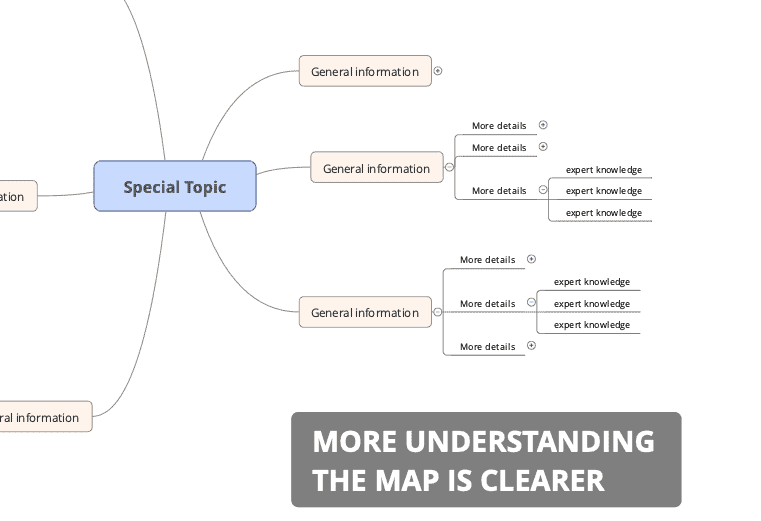
The removed information is not gone. You consciously don’t have to think about it. You are getting unconsciously competent with that basic knowledge! You entered stage 4 for a little field of your studies!
When you continue to study, your knowledge fills more and more of the middle circle. Your mind map grows bigger.
The moment you passed your exam, you achieved level 3 and perhaps even 4. You can analyze information. You may even be able to talk about some concepts without analyzing consciously!
A second milestone is reached when you study this topic in more detail.
The knowledge in your mind map is reduced even more. In the end, you may even end up with an empty map.
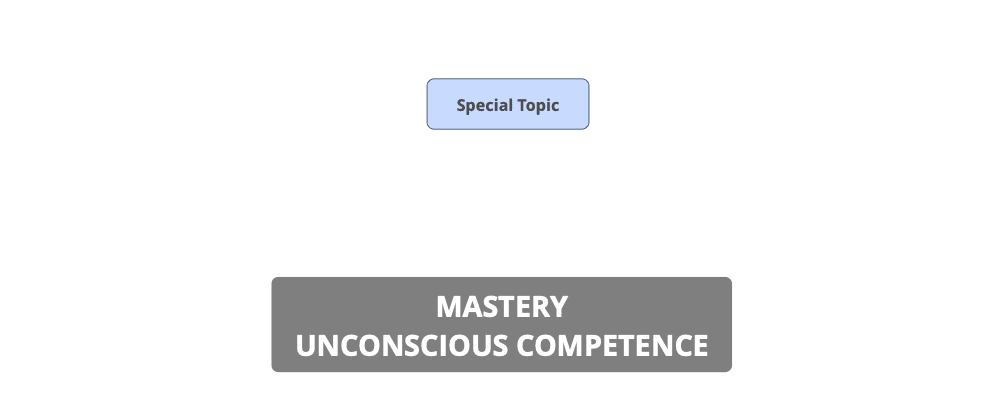
You’ve gone from unconsciously incompetent to unconsciously competent! You’ve gone from beginner to expert or master. You can discuss topics and related topics without conscious analysis. You can access the information in your mind without using a mind map.
When you compare this with a mind mapping software tool the following happens.
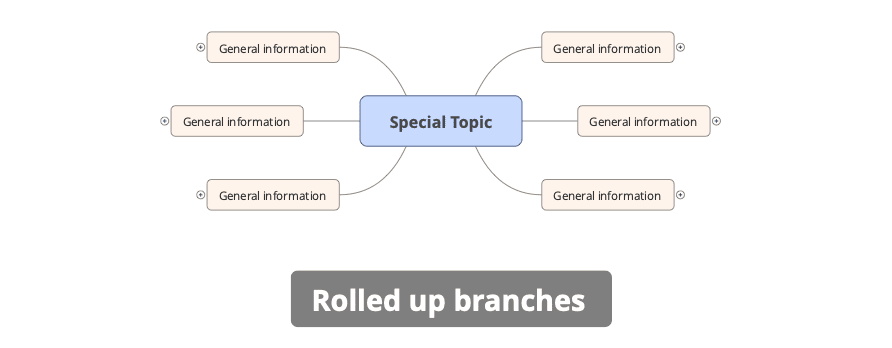
At stage 4 you rolled up your branches so you only see the topic. When you need the information, you can roll down the branch and use the content. Most of the time you don’t need the mind map anymore. All branches can stay rolled up.
What’s next for you?
There you have it, mind maps used for the learning stages, and your competence in a field.
Next time you study, make sure you are aiming for the middle circle, the one with competence. You probably don’t need mastery. You certainly need more than basic knowledge.
Enjoy your next study session, knowing you are well on your way to competence!
